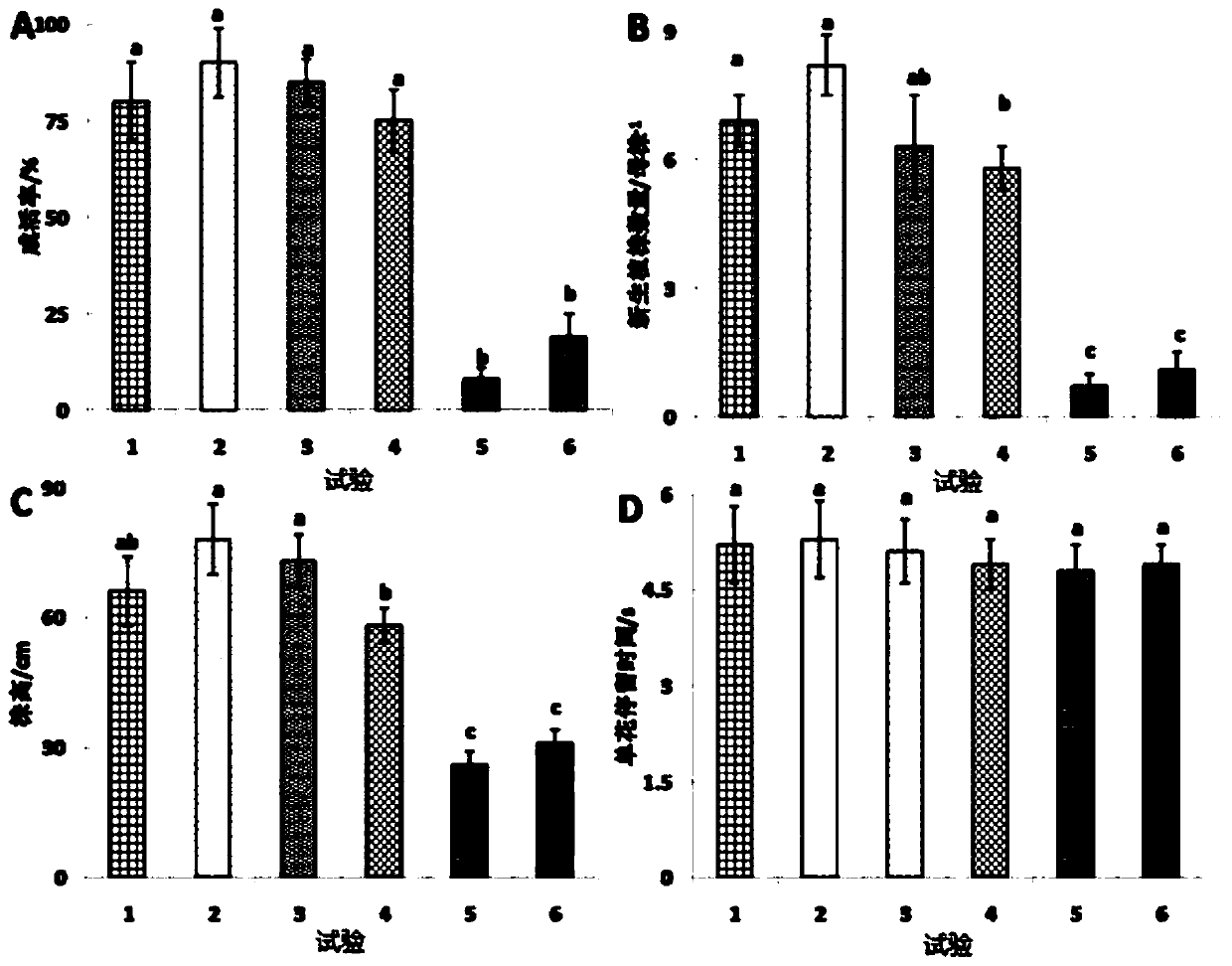Method for returning grain plots to wetlands by using nectariferous plant namely stachys baicalensis herbs
A technology of nectar source plants and water, applied in the field of returning farmland to wetness, can solve the problems of low recovery success rate of S. chinensis, and achieve the effects of good growth, high survival rate and easy acceptance.
- Summary
- Abstract
- Description
- Claims
- Application Information
AI Technical Summary
Problems solved by technology
Method used
Image
Examples
specific Embodiment approach 1
[0015] Specific implementation mode 1: In this implementation mode, the method of returning farmland to wetland by utilizing the nectar source plant Stachyssois is carried out according to the following steps:
[0016] 1. Reorganization of the returned farmland plots: set up cofferdams around the returned farmland plots, detoxify the returned farmland plots, and then plow them;
[0017] 2. Transplanting seedlings: Transplant Shuisu seedlings with a plant height of 10-20cm into the plots that have been sorted out;
[0018] 3. Water management: water the Shuisu seedlings immediately after transplanting, and check the soil moisture status every other day to keep the water content at 60-100% of the saturated water holding capacity of the soil; after the seedlings grow for 25-35 days, keep returning to the farmland The surface water depth of the plot is 0.1-20cm; that is, the conversion of farmland to wetland has been completed.
[0019] Step 1 of this embodiment is to set up a co...
specific Embodiment approach 2
[0022] Embodiment 2: This embodiment differs from Embodiment 1 in that the height of the cofferdam in step 1 is 5-30 cm higher than the surface of the degraded land, and the width of the lower part of the cofferdam is 30-50 cm. Others are the same as the first embodiment.
specific Embodiment approach 3
[0023] Specific embodiment 3: The difference between this embodiment and specific embodiment 1 or 2 is that in step 1, Wotuan is used for detoxification, and the dosage of Wotuan is 400-600 g / mu. Others are the same as those in Embodiment 1 or 2.
PUM
 Login to View More
Login to View More Abstract
Description
Claims
Application Information
 Login to View More
Login to View More - R&D
- Intellectual Property
- Life Sciences
- Materials
- Tech Scout
- Unparalleled Data Quality
- Higher Quality Content
- 60% Fewer Hallucinations
Browse by: Latest US Patents, China's latest patents, Technical Efficacy Thesaurus, Application Domain, Technology Topic, Popular Technical Reports.
© 2025 PatSnap. All rights reserved.Legal|Privacy policy|Modern Slavery Act Transparency Statement|Sitemap|About US| Contact US: help@patsnap.com

